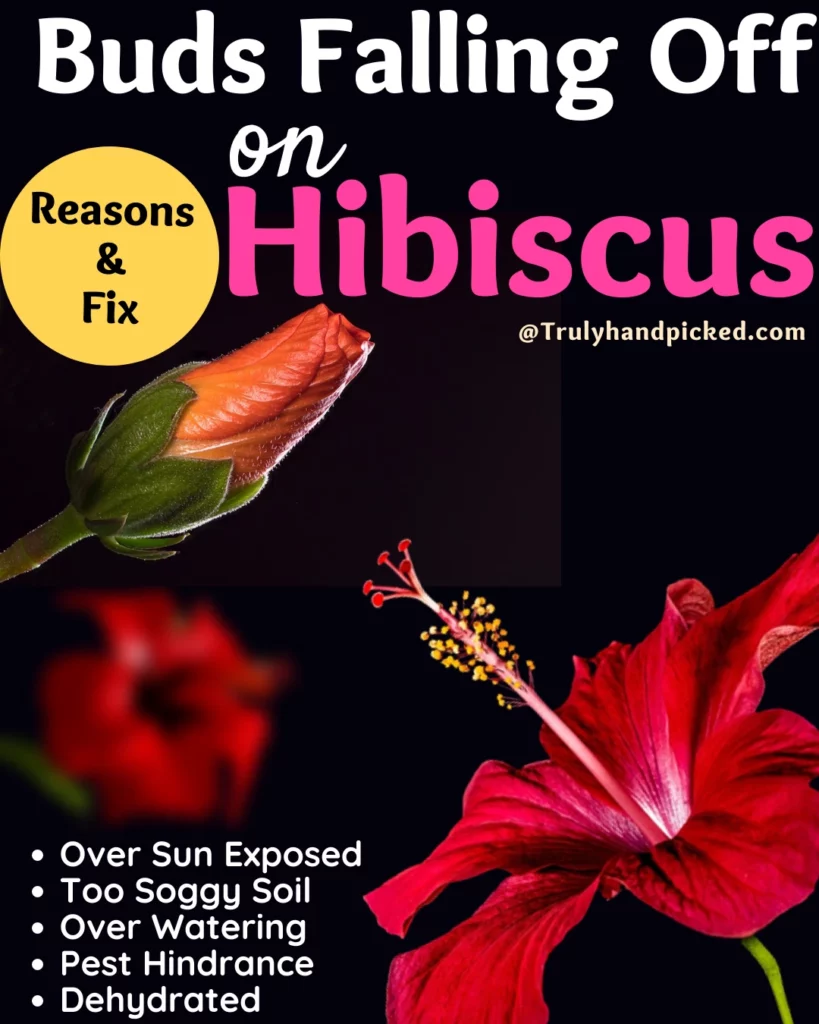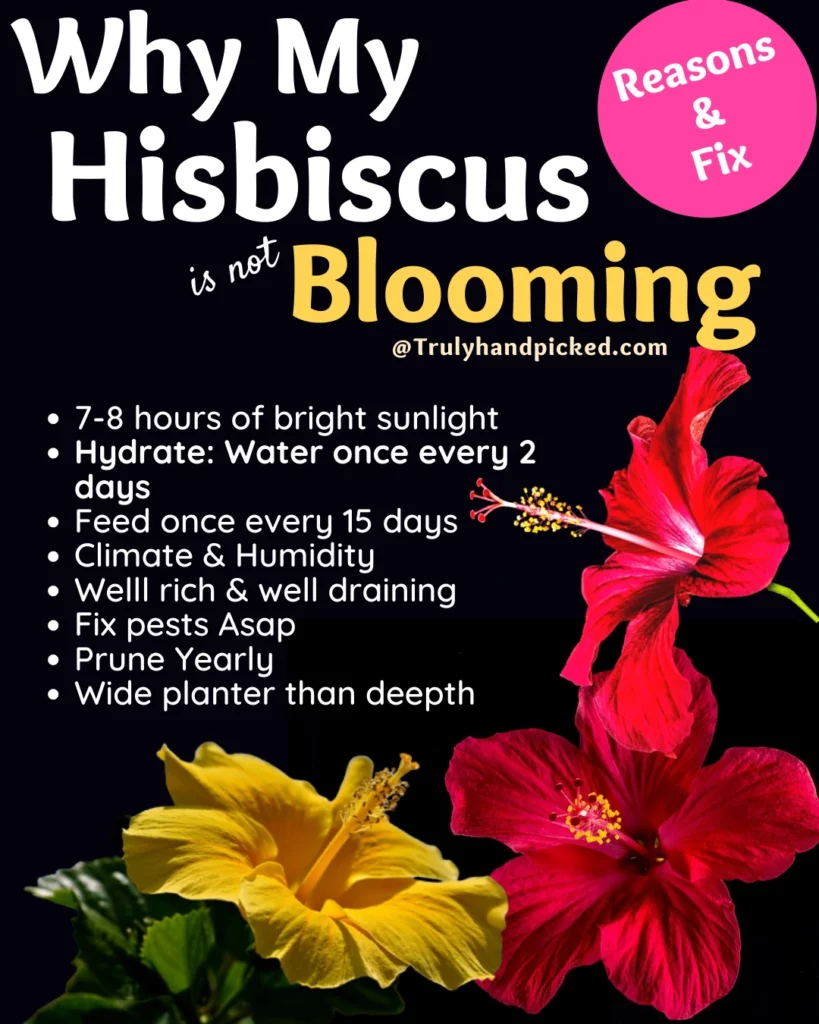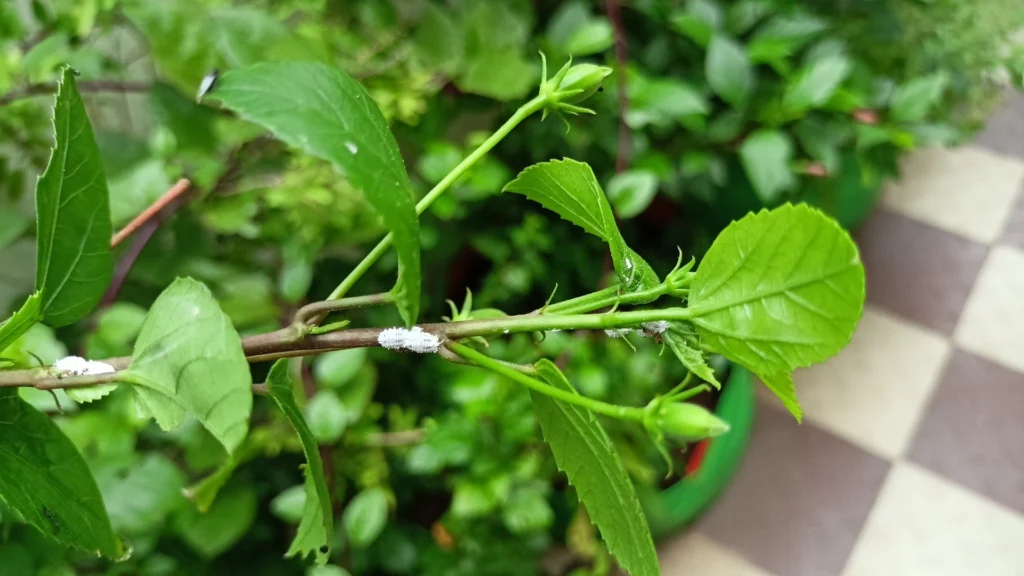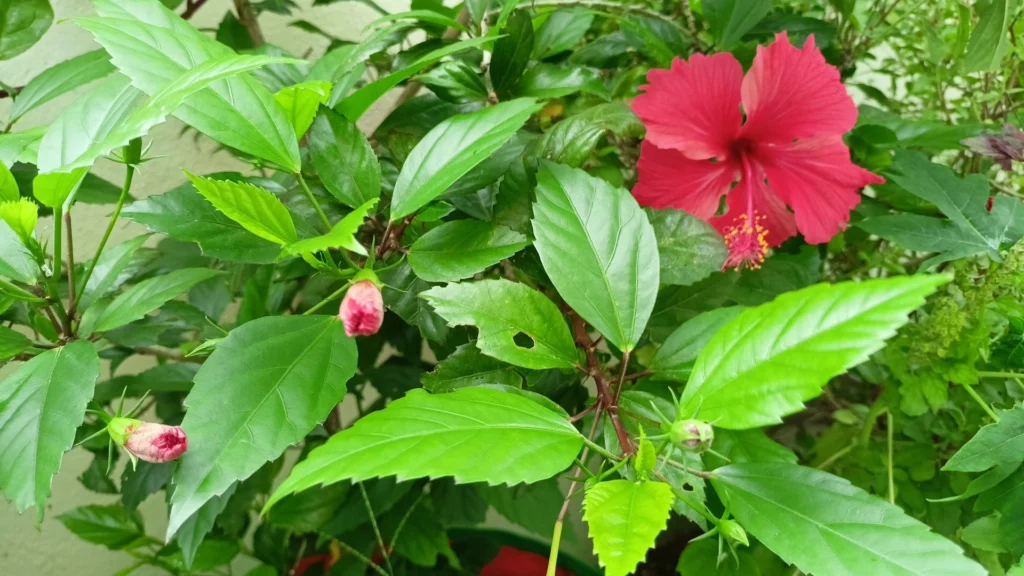Despite being fragrance-free, hibiscus considers one of the best flowering plants of all time. Besides its auspicious value, hibiscus flowers hold an inimitable appearance.
They can bloom in various radiant tints like red, yellow, pink, and white; relying on their selected species. As this flowering plant cultivates only for its amazing blossoms, a gardener should always stay attentive to keep it blooming.
Here we suggest some useful tips on how to encourage your hibiscus plant to keep blooming and treat all its blooming issues expertly-
Not Flowering: How To Keep My Hibiscus Blooming?
Most of the genera of hibiscus bloom during the mid to late summer season. However, you can make this plant bloom all year long by initiating some mild changes in its caring regimen. These are, as follows-
Hydrate Properly:
- Set a proper watering routine with the right consistency
- Water once every two days during peak season and summer
- Water your plant only when the top1-2 inches seem dry
- Apply mulching during the blooming period to keep the soil hydrated consistently
Related: Reasons for yellow leaves on your hibiscus
Pick The Right Soil:
- Make your planting soil well-drained with a slightly acidic pH balance
- Prepare the soil with vermicompost, organic potting mix, coco coir, and perlite
- Let the soil amend two weeks before the plantation
Fertilize Adequately:
- Feed your plant once every two weeks especially, during the entire blooming season
- Use the dilute form of a balanced fertilizer with half strength only
- Increase the potassium and phosphorus content in your used fertilizer to enhance the blooming capacity of your plant
Provide Enough Light:
- Place your plant under direct sunlight with full sun exposure
- Make sure that your hibiscus plant is getting 7-8 hours of bright sunlight every day
- Provide your plant with artificial light if you are growing it indoors with partial shade

Maintain Perfect Temperature:
- Hibiscus plants prefer hot conditions to thrive and bloom
- Make sure you can provide your plant with a temperature between 60° to 90° F
- Be certain that you never let the temperature drop below 32° F, even at nights
Sustain The Suitable Climate:
- As it is of tropical origin, hibiscus likes high humidity
- Use an artificial humidifier if you live in a place with low-humidity
- And make sure the place has good air circulation where you place your plant
Keep Checking For Pests and Bugs:
- Spider mites, whiteflies, Japanese beetles, aphids, mealybugs, etc. are some common pests of the hibiscus plant
- Try to keep checking your plant regularly to find the mildest infestation of such a nuisance
- Apply organic insecticidal sprays on our entire plant once a week, if you find any of them near your plant
Prune In Time:
- Different species of hibiscus have different types of growing speeds
- However, you must prune them yearly, during early spring or late winter days
- Try to shed the unwanted parts from your plant more than once a year, if you are growing a bushier species
Related: How to clean leaves and how to get philodendron bushy.
Repot Yearly:
- If you are cultivating hibiscus indoors, try to repot it every year
- Choose only one size bigger planter than the previous one
- Always use fresh potting soil for your repotting session
Choose The Right Pot:
- Don’t choose a planter that has deep space lengthwise
- Hibiscus plant rather prefers planter with wide space
- This way the root will spread far widthwise and increase the blooming rate of your plant surprisingly
Hence, follow these tips accordingly and wait till the exact blooming season arrives for your selected hibiscus species. If you can provide your plant its required care, it will never disappoint you and offer you a handful of flowers at the end of the booming season, for sure.
Why Are My Hibiscus Buds Falling?
Don’t start celebrating by finding some buds on your hibiscus plant! Sometimes, flower buds can fall off before blooming too. This is very unfortunate for any gardener if their hibiscus plants start dropping buds before blooming.
But, without getting mourned, we must find out the real causes behind it and eliminate them. Here are some possible causes along with their preferable solutions in this regard-
Over Sun Exposed:
Causes:
- If you let the plant, get sunburn due to over-sun exposure
- When the plant is soaking under the direct sun for more than 9-10 hours a day
Solutions:
Provide your outdoor plant with a mild shade during the scorching afternoon sun. Keep the planter inside your house during a summer afternoon, especially when having buds.
Dehydrated:
Causes:
- If you keep your plant underwatered for more than one month
- When you don’t water your hibiscus plant adequately that is about to bloom
Solutions:
Never let your plant wilt between watering and always use good quality water to hydrate your plant every week.
Overwatering:
Causes:
- If you water your plant before the soil turn a bit dry
- When you allow your plant to grow in waterlogged or soggy conditions
Solutions:
Never water your plant more than twice a week, no matter how dry the condition is. Also, never water a growing hibiscus plant until the top planting soil seems a bit dry between watering.
Related: Why my bougainvillea is flowering and dropping leaves
Pests’ Attacks:
Causes:
- If you let those sucking insects slurp the nutrients from your budding plant
- When you don’t apply any insecticides or proper protection on your blooming plant
Solutions:
Try to keep the pests’ infestation at bay by giving your plant a rinse of organic insecticides before the buds begin to form.
Humidity and Climate:
Causes:
- When you let your plant thrive in a place with low temperature or low humidity
- If you don’t maintain a consistent climate for your budding hibiscus plant
Solutions:
Attempt to keep the blooming hibiscus plant in a room or spot with moderately warm conditions and high humidity along with good air circulation.
How To Make Hibiscus Bushy?
To promote the growth of your hibiscus and make it bushy naturally, you must mind the caring process of your plant. Here are some quick tips on how to increase the exotic allure of a flowering hibiscus plant by making it shaggier-
- Prune your hibiscus plant consistently starting from winter till spring
- Always cut back the leggy stems and old leaves to give the new shots more space to emerge
- Pinch the tips a little after cutting them off to encourage the new growth
- Trim off the hardy hibiscus stem into half on the spot of 1-inch above the nod
- Cut off the fresh yet extra leggy leaves or stalks during late rainy seasons
- Apply a water-soluble balanced fertilizer once the pruning season is gone
- Spread it in a 20-20-20 NPK ratio once a month to let your plant recover from pruning with stimulated new growth.
Related: How to make my coleus fuller/bushy
Bushy Hibiscus and Pest Hindrance
FAQ: Best Fertilizer For Hibiscus?
Any fertilizer that is slow-released and balanced in NPK ratio is good for hibiscus. Now, look for the purpose you are feeding your growing hibiscus to pick the right fertilizer. Pick a fertilizer with high phosphorus and potassium rather than nitrogen content when you are applying it for better blooming. On the other hand, use a high-nitrogen fertilizer for your hibiscus plant when you are looking for a bushy form of it. To feed your plant organically, try these products with the right quantity-
- Manure
- Worm casting
- Tea leaves
- Used tea bags
- Wood ash
- Banana peel
- Coffee grounds
- And diluted vinegar
So, you can feed your growing and blooming hibiscus plant organically and commercially both ways, depending on the requirements of your growing plant.


